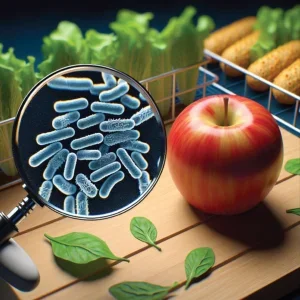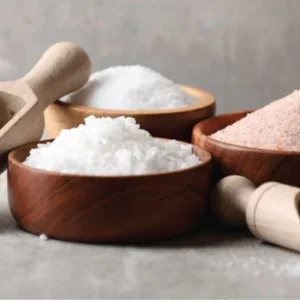
There are many reasons why someone might incorporate plant-based dairy alternatives (PBDAs) into their diet, from lactose intolerance to veganism to sustainability concerns. At the same time, a common perception has grown around PBDAs, considering them to be healthier than their dairy counterparts. But is this true? The answer seems to be far more complex. While the history of PBDAs stems back potentially as far as the eight century CE, we can trace the modern boom in the uptake of PBDAs in the US and Europe back to the mid-1970s. For example, according to a 2020 study in Agriculture and Human Values, between 1974 and 2020, dairy milk consumption between ages 16–24 in the UK fell from 94% to 73%. That same year, Mintel put the value of the UK’s milk alternatives market alone at almost £400m.
Today, the market has swelled in variety, not only in terms of different brands and products but also when it comes to the sources from which they are derived. Supermarket aisles now boast a wide range of almond, oat, coconut, soy, pea and rice-based alternatives to milk, yoghurt, ice cream, cheeses and more – which can pose a challenge when talking about the health qualities, or lack thereof, of PBDAs.
A market of many options
According to Kathryn Burton-Pimentel, scientific researcher and registered dietitian at Agroscope, the Swiss Confederation’s centre of excellence for agricultural research, the association between plantbased products and health is a common misconception among consumers. “There are some advantages and some disadvantages,” she notes. “We have to consider, for example, the type of products and how they’re processed to really assess what the impact is in terms of health – we can’t just assume that plant-based equals healthy in this particular arena.”
The marketing departments for many PBDA products are responsible for this assumption, which has led consumers to expect PBDAs to be similar or identical to their dairy counterparts in terms of nutrition. This often isn’t the case, especially when it comes to key nutrients like protein, calcium and vitamin B12.
A 2022 study published in the journal Nutrients looked at 245 plant-based cheese alternatives and found that the majority contained less protein than their dairy counterparts. And it’s not only cheese alternatives that are lacking in protein, calcium or other nutrients, yoghurt and ice-cream alternatives suffer in this area as well. That’s not to say that dairy alternatives cannot possess these qualities, but they require additional fortification to ensure the desired micronutrient levels that are found in dairy.
However, since there is no legislation in place in neither the UK, the US or Europe that require PBDAs to aim for a certain level of nutrition, this can cause confusion for those consumers attempting to read between the labels. There are groups looking to change this, including the FDA in the US that has recently requested PBDAs possess a base level for nutrients in correspondence to dairy products or at least make any gap clear to the consumer.
Nutrients and negatives
Not all PBDAs are equal either. Just as rice-based products often have higher sugar levels when compared with other dairy alternatives, coconut products have considerably higher saturated fat levels. While this leads to an improved mouthfeel closer to dairy, it also robs PBDAs of one of the big health benefits they possess over dairy.
Soy and pea products offer the closest nutrient profile to their dairy counterparts when it comes to protein. Such drinks frequently possess similar or even higher amounts than dairy milk, and other PBDAs are often fortified with either soy or pea protein to boost their nutrient content.
While there remain concerns over the bioavailability of nutrients – how they are absorbed and made available for use in the body – like protein and calcium in PBDA products, the British Dietetic Association, the association and trade union for UK dietitians, states that calcium bioavailability from fortified plant-based drinks and tofu is comparable to that of dairy milk. Elsewhere, studies have shown the same to be true for PBDAs based on pea or soya protein in terms of that particular micronutrient.
For those on a plant-based diet, it’s important to ensure that they consume PBDAs fortified with vitamin B12, which contributes towards keeping blood and nerve cells healthy and helps with the formation of DNA. On the other hand, PBDA’s fortified with vitamin D can offer some potential benefits in markets like the UK and Europe where dairy products are typically not similarly fortified, unlike in the US.
Even the terminology can bring their own headaches, with many supporters of PBDAs objecting to the ‘ultra-processed’ label that can be associated with these products. Typically, this term has been used to highlight food and drink containing high levels of saturated fat, salt and sugars, which can be misleading when discussing PBDAs with a more balanced nutritional profile. However, there is often an association among consumers, particularly those in Europe, that ultra-processed food is a cause of the today’s deadliest diseases, such as obesity, heart disease, diabetes, cancer, stroke, just to name a few. While it is true that many of the highly processed foods are connected with such chronic disease, many critics object with the likes of soya milk, as an example, being placed in this same category.
Careful consideration
It’s worth noting that different population groups will have different nutritional requirements when it comes to consuming PBDAs. For instance, PBDAs offer a clear health benefit to those suffering from lactose intolerance, which can cause stomach pain, bloating, nausea, diarrhoea or constipation. Those with dairy allergies may likewise benefit in much the same way.
Yet, the lack of lactose can also come with a downside. “While plant-based alternatives don’t have lactose present as a sugar, other simple sugars are present in [many of] these drinks in the form of glucose, fructose and sucrose,” notes Burton- Pimentel. “For someone who is able to tolerate lactose, milk [can be] better for blood sugar stability because lactose raises blood sugar less than other simple sugars.”
“While plant-based alternatives don’t have lactose present as a sugar, other simple sugars are present in [many of] these drinks in the form of glucose, fructose and sucrose. For someone who is able to tolerate lactose, milk [can be] better for blood sugar stability because lactose raises blood sugar less than other simple sugars.”
For children consuming PBDAs, on the other hand, it’s important that these products contain comparable amount and quality of protein and calcium – both vital for a growing body – as found in dairy products. While adults can bolster their diet with green leafy vegetables and other sources of calcium, dairy is the leading major source of calcium in a child’s diet. Since children tend to stray away from the likes of broccoli and Brussels sprouts, it is essential that PBDA in their diet be fortified to at least the same nutritional level as dairy products.
As people get older, on the other hand, they have greater difficulty producing and metabolising vitamin D and B12 due in part to less efficient conversion in their livers and kidneys. As a result, those 50 years old and above should take extra care in ensuring that they’re consuming suitable levels of both nutrients, as well as sufficient levels of protein and amino acids, which are crucial for promoting mobility and muscle health.
When anyone is considering adopting a vegan diet, consulting a healthcare professional is vital, but this is particularly true for pregnant women. “It’s important to consider whether they’re replacing dairy products or adding these products into the diet,” says Burton-Pimentel. “If they’re replacing dairy products, then yes, the rest of the diet must be adequate. If it’s in addition to [dairy], there’s less concern.”
Good for the planet and its people
This doesn’t even begin to mention the various environmental considerations around the dairy industries, with cattle and other livestock producing some 14.5% of global greenhouse gas emissions, according to the UN’s Food and Agriculture Organization. As rising temperatures and extreme weather continue to grow more frequent, the dairy industry will have an unmistakable effect on global health in years to come – something that makes PBDA’s more appealing to the climate-conscious consumer. Per litre, PBDAs – particularly oat and soya-based products – use less land and water and generate fewer emissions than dairy options.
However, while PBDA’s may be healthier for the planet, the health of individuals is important too, and consumers need to be aware of the nutrient content of the PBDAs in their diet and adjust as needed. The widespread availability and range of dairy alternatives is exciting, especially for people who rely on these products, but many PBDAs do not currently possess nutritional benefits comparable to dairy. Until regulations are brought in to address this, it is on the consumer to make sure they are getting the nutrients they need.
So, are PBDAs as healthy as they are made out to be? In some cases no, and those considering them for health reasons alone should familiarise themselves on what they’re consuming. At the same time, when adequately fortified, there’s every reason to think that PBDA’s can be as healthy as dairy. While a single broad and comprehensive answer would be useful, it really all depends on the product at hand. So, in short, be aware of your nutrient requirements and always check the label.
Vitamin K: The key to healthy living
As per the World Health Organisation (WHO), nutrition plays a pivotal role in both health and development, serving as a key factor in reducing the risk of diseases such as cardiovascular disease. Among essential vitamins, vitamin K stands out as a notable contributor to overall health. This fat-soluble vitamin plays a multifaceted role in promoting well-being, including wound healing, blood clotting, directing calcium to bones and improving heart health. Vitamin K is available in two primary forms. The first and most common form is phylloquinone, which is predominantly found in green leafy vegetables such as collard greens, kale and spinach. The second form, known as menaquinones, is present in certain animal-derived foods and fermented products. Remarkably, it can also be produced by bacteria within the human body.
The importance of vitamin K extends to its role in the production of various proteins critical for both blood clotting and bone formation. Notably, prothrombin, a vitamin K-dependent protein, directly participates in the blood clotting process, while osteocalcin relies on vitamin K for the production of healthy bone tissue.
Vitamin K is found throughout the body, residing in vital organs like the liver, brain, heart, pancreas, and bones. It’s worth noting that vitamin K is metabolised swiftly and excreted through urine or stool. Consequently, it seldom accumulates to toxic levels in the body, even in cases of high intake, a situation that may occasionally occur with other fat-soluble vitamins.






